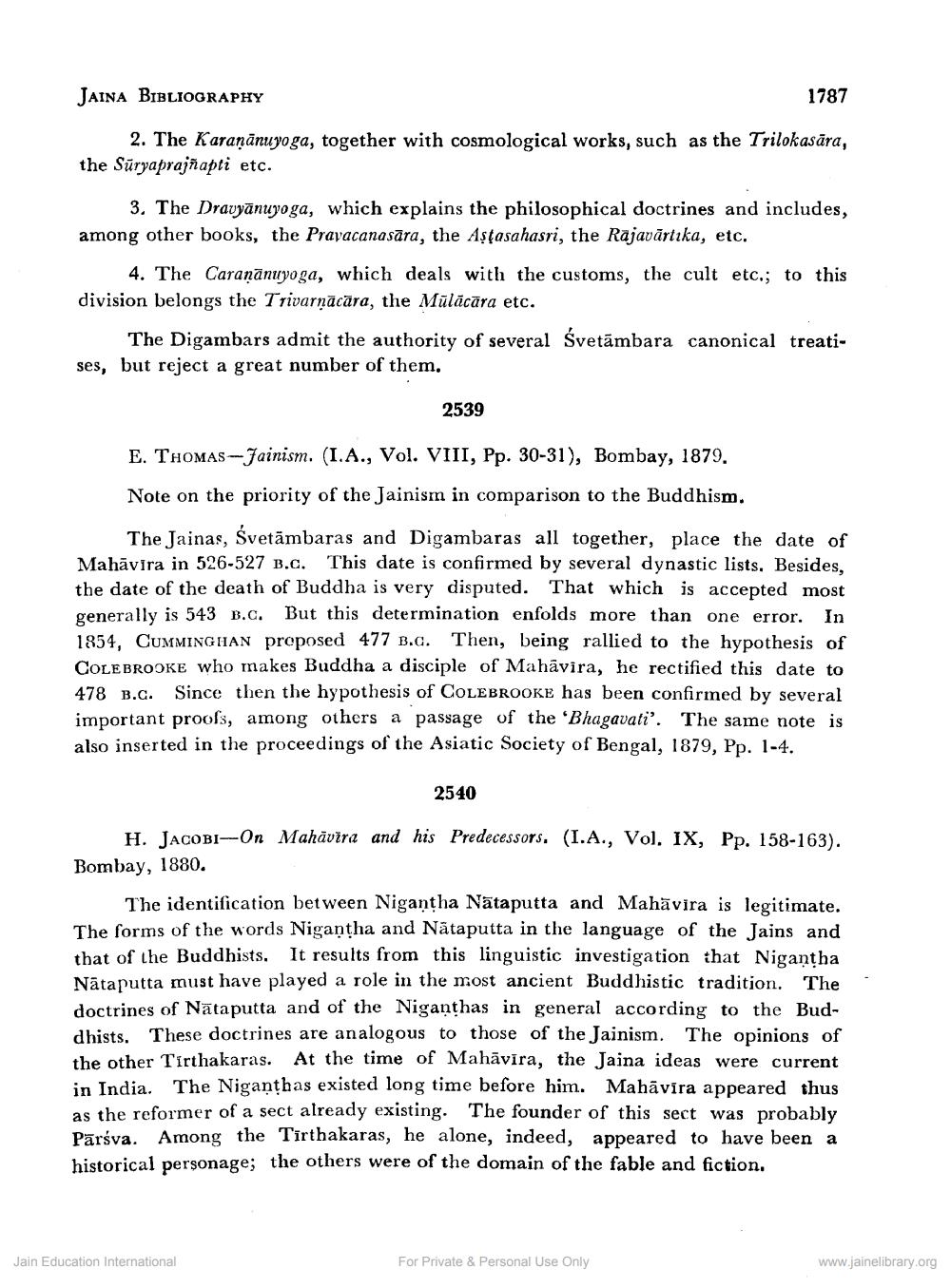________________
JAINA BIBLIOGRAPHY
1787
2. The Karanānuyoga, together with cosmological works, such as the Trilokasāra, the Süryaprajñapti etc.
3. The Dravyānuyoga, which explains the philosophical doctrines and includes, among other books, the Pravacanasāra, the Astasahasri, the Rajavārtika, etc.
4. The Caraṇānuyoga, which deals with the customs, the cult etc.; to this division belongs the Trivarnācāra, the Mūlācāra etc.
The Digambars admit the authority of several Śvetāmbara canonical treatises, but reject a great number of them.
2539
E. THOMAS-Jainism. (I.A., Vol. VIII, Pp. 30-31), Bombay, 1879.
Note on the priority of the Jainism in comparison to the Buddhism.
The Jainas, Svetāmbaras and Digambaras all together, place the date of Mahāvira in 526-527 B.C. This date is confirmed by several dynastic lists. Besides, the date of the death of Buddha is very disputed. That which is accepted most generally is 543 B.C. But this determination enfolds more than one error. In 1854, CUMMINGHAN proposed 477 B.C. Then, being rallied to the hypothesis of COLEBROOKE who makes Buddha a disciple of Mahāvira, he rectified this date to 478 B.C. Since then the hypothesis of COLEBROOKE has been confirmed by several important proofs, among others a passage of the 'Bhagavati'. The same note is also inserted in the proceedings of the Asiatic Society of Bengal, 1879, Pp. 1-4.
2540
H. JACOBI--On Mahāvira and his Predecessors. (I.A., Vol. IX, Pp. 158-163). Bombay, 1880.
The identification between Nigantha Nātaputta and Mahāvira is legitimate. The forms of the words Nigantha and Nātaputta in the language of the Jains and that of the Buddhists. It results from this linguistic investigation that Nigantha Nātaputta must have played a role in the most ancient Buddhistic tradition. The doctrines of Nataputta and of the Niganthas in general according to the Buddhists. These doctrines are analogous to those of the Jainism. The opinions of the other Tirthakaras. At the time of Mahāvīra, the Jaina ideas were current in India. The Niganthas existed long time before him. Mahāvīra appeared thus as the reformer of a sect already existing. The founder of this sect was probably Pārsva. Among the Tīrthakaras, he alone, indeed, appeared to have been a historical personage; the others were of the domain of the fable and fiction.
Jain Education International
For Private & Personal Use Only
www.jainelibrary.org




